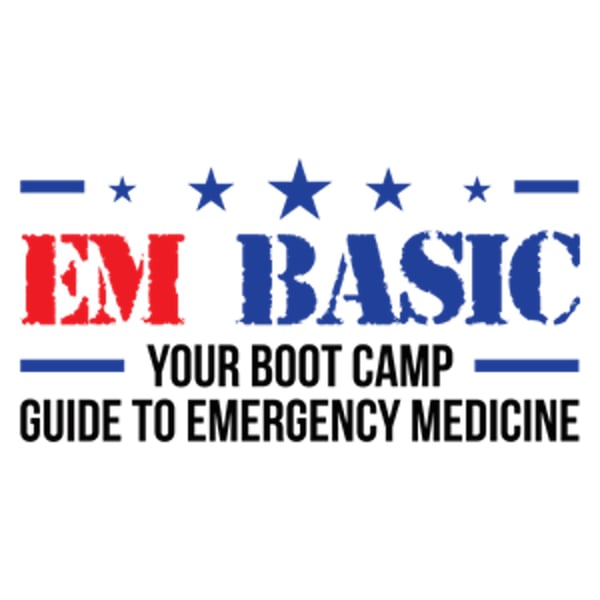102 Transfusions of Blood Products
EM Basic
EM Basic LLC
4.6 • 665 Ratings
🗓️ 22 March 2021
⏱️ 26 minutes
🧾️ Download transcript
Summary
Join EM physicians Mike Samuels and Dan McCollum as they discuss different blood products that can be transfused.
- Why don't we commonly use whole blood?
- Who needs to receive packed red blood cells?
- Are there any dangers to giving platelets?
- When is fresh frozen plasma needed?
Episode 100 discussed potential complications, while this episode will discuss why you should be using these products. Enjoy!
Transcript
Click on a timestamp to play from that location
| 0:00.0 | Hello again everyone. I'm Dr. Mike Samuels, a third-year emergency medicine resident at the Medical College of Georgia in Augusta. |
| 0:08.8 | Joining me again today is Dr. Dan McCollum, Assistant Program Director of the residency here. |
| 0:14.3 | Good morning, Dan. |
| 0:15.4 | Morning, Mike. I'm excited to work with you again. |
| 0:18.6 | So last time, we talked about the potential adverse reactions or complications of blood |
| 0:23.4 | transfusions. |
| 0:25.0 | Today, we are going to talk about the basics of transfusion medicine and component therapy. |
| 0:30.6 | It is important to note there are no uniform guidelines regarding the use of component |
| 0:35.8 | therapy. |
| 0:37.1 | And the when or how to transfuse can be |
| 0:40.2 | the subject of some controversy. As before, we have nothing to disclose, and the views expressed |
| 0:47.2 | here are our own and do not represent those of the Medical College of Georgia or any other |
| 0:53.2 | institution or entity. |
| 0:55.1 | So there are four main types of blood products that are parts of component therapy. |
| 1:00.2 | These are packed red blood cells, or PRBCs, fresh frozen plasma, or FFP, |
| 1:07.4 | cryoprecipitate, and platelets. |
| 1:10.7 | All of these are taken from blood donors, although their |
| 1:13.1 | preparation can vary. Whole blood transfusions are not done in the United States due to the |
| 1:20.6 | difficulty in making an exact match between donor and recipient, as well as the increased risk |
| 1:26.5 | of infection and the limited shelf life. |
| 1:30.0 | In a deployed setting for the military, whole blood has been used with some success in trauma |
| 1:34.8 | patients. However, these are incredibly sick and unstable trauma patients with a limited amount |
... |
Please login to see the full transcript.
Disclaimer: The podcast and artwork embedded on this page are from EM Basic LLC, and are the property of its owner and not affiliated with or endorsed by Tapesearch.
Generated transcripts are the property of EM Basic LLC and are distributed freely under the Fair Use doctrine. Transcripts generated by Tapesearch are not guaranteed to be accurate.
Copyright © Tapesearch 2025.

